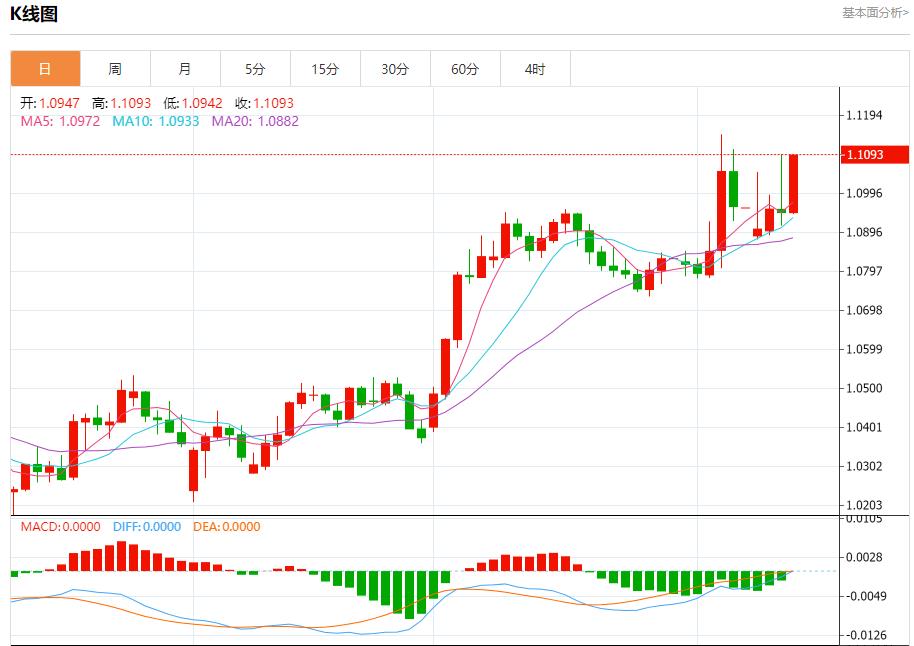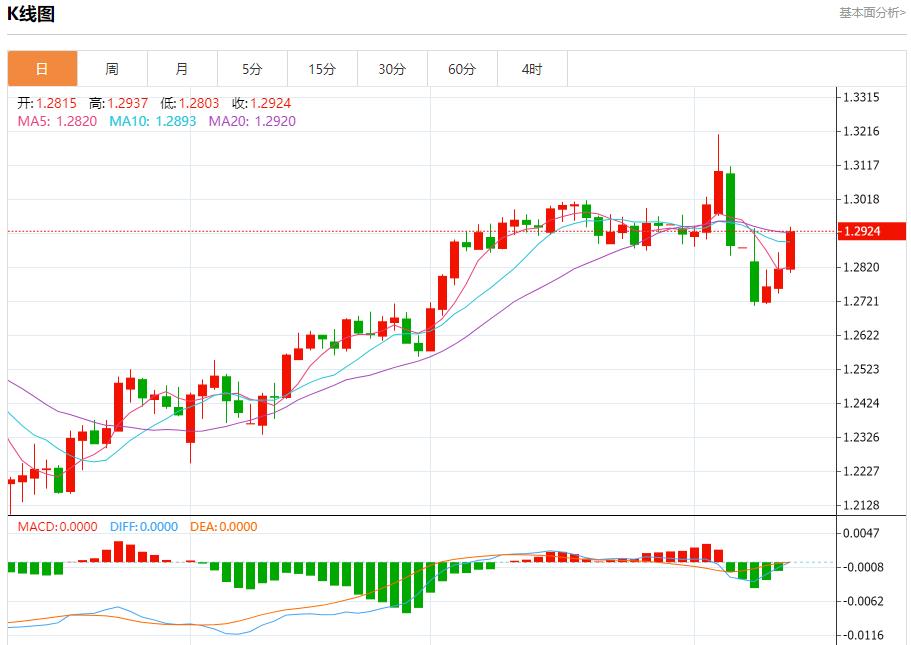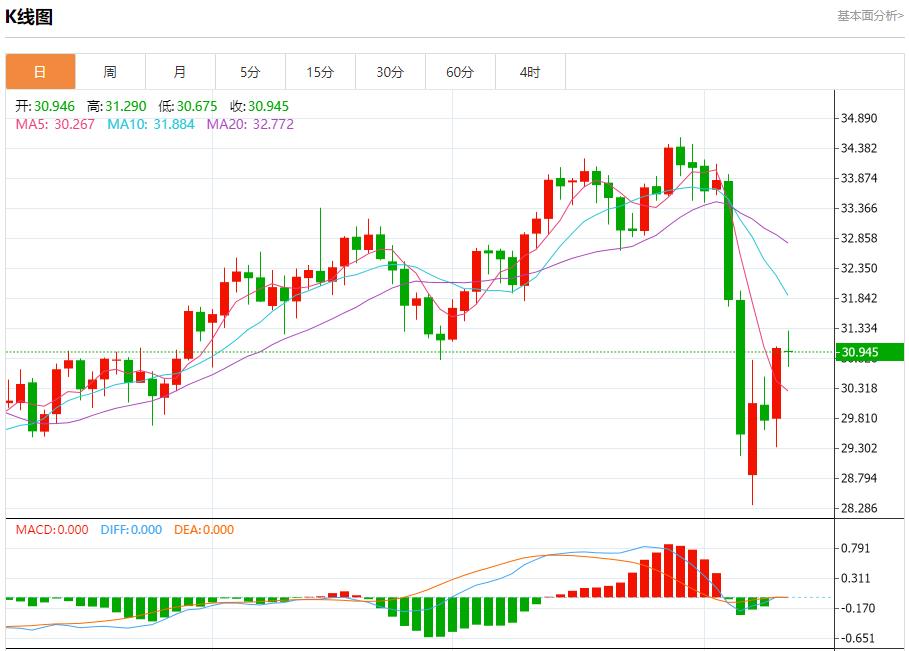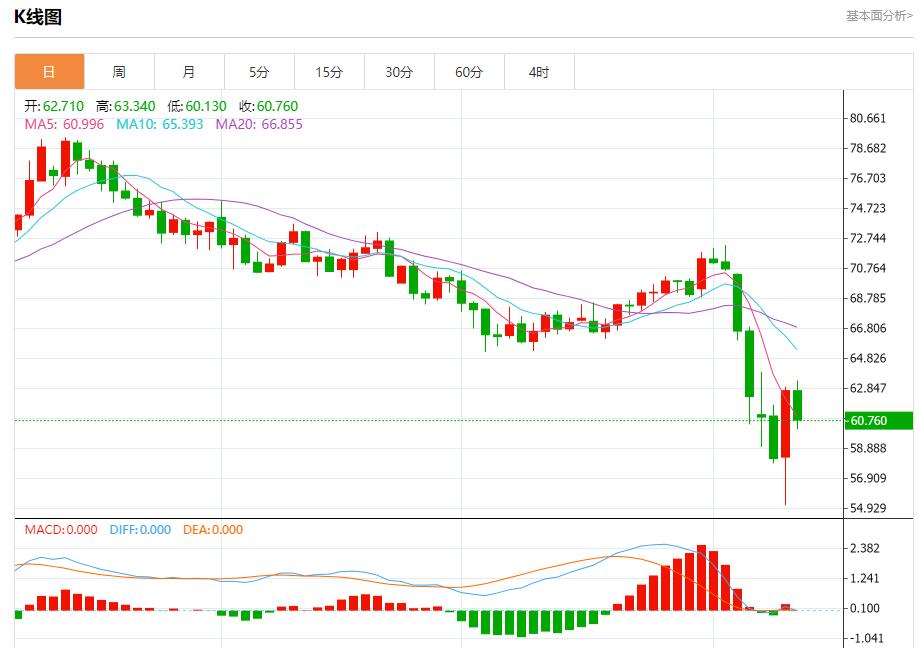Wonderful Introduction:
Life is full of dangers and traps, but I will never be afraid anymore. I will always remember. Be a strong person. Let "strong" set sail for me and always accompany me to the other side of life.
Hello everyone, today XM Foreign Exchange will bring you "[XM Foreign Exchange Platform]: US White House Economic Advisor Hassett talks about trade progress, and short-term trend analysis of spot gold, silver, crude oil and foreign exchange on April 10." Hope it will be helpful to you! The original content is as follows:
The three major stock index futures fell, with Dow futures mainly blue-chip stocks falling 1.18%; S&P 500 futures falling 1.60%; and Nasdaq 100 futures mainly technology stocks falling 1.92%. European stocks rose, with the German DAX index rising 5.77%; the French CAC40 index rising 5.62%; and the UK FTSE 100 index rising 4.58%.
① US White House Economic Advisor Hassett said that several trade agreements are quite mature and the White House is promoting transactions in the later stages. ② He mentioned that the United States has established a process to carry out tariff agreement-related affairs in an orderly manner. ③Hassett also pointed out that the bond market may have responded to tariff decisions, but did not trigger panic moves. ④ He stressed that Trump's decision to suspend tariffs is part of an orderly advancement and everything is going as planned.
The 12th ASEAN Finance Ministers and central bank governors' meeting issued a joint statement emphasizing that ASEAN countries will jointly strive to build a resilient, inclusive and sustainable economic future in the region. The statement pointed out that amid the slowdown in inflation, strong domestic demand, stable investment activity, strong export performance and good employment conditions continue to support ASEAN's economic performance. The statement said the uncertainty brought about by tariffs and potential retaliation measures could exacerbate capital flows and exchange rate fluctuations. ASEAN is paying close attentionThis situation and is ready to deal with such fluctuations when necessary.
① The UK Statistics Office (ONS) said it plans to complete a comprehensive reform of labor data in November 2026, but if further problems arise, it may be postponed to 2027. ②The Bank of England and other economists criticized ONS for its poor quality of unemployment and employment data. ③ Data issues make it difficult for the Bank of England to set interest rates and also bring difficulties to the government's employment policies. ④The UK Statistics Office has successfully trialled a shorter 15-minute online survey to replace the current face-to-face survey that takes an average of 45 minutes. ⑤ However, the new survey is not expected to be used to input major economic data until November 2026, and may take longer. ⑥ During this period, ONS will increase the number of investigators to increase the response rate of existing face-to-face surveys. ⑦ The new survey plan covers 90,000 households every quarter, up from 63,000 in the fourth quarter of 2024 and 44,000 in the mid-2023. ⑧The new survey data will be released in parallel with the old survey data starting from the first quarter of 2026.
① Kazakhstan exceeded its OPEC+ production cut commitment in March. ② The country remains committed to complying with the OPEC+ agreement and plans to continue to fulfill its commitments in April. ③ Kazakhstan plans to partially make up for previous overproduction through production cuts in April. ④ Nevertheless, oil transportation through CPC did not decrease in March. ⑤ Kazakhstan is negotiating with foreign companies on oil production cuts.
① Although Trump's 90-day tariff suspension has significantly reduced the risk premium of Forex Options volatility, the volatility of short-term maturity options is still high, reflecting the market's concerns about large spot volatility, partly related to the upcoming U.S. CPI data. ② Overnight options (expired at 10 a.m. New York time the next day) are closely related to inflation data, and their implicit volatility is used to measure the actual volatility risk to determine the premium. The premium reduction of overnight options is relatively small, and is more obvious than other expiration dates such as 1-month options. ③ For the EUR/USD (EUR/USD) pair, the overnight implied volatility dropped from 24.0 before the tariff suspension to 18.0, which is equivalent to the premium or break-even point of the simple parity straddle option being $83 spread, lower than the previous $110 spread. At the end of March, the implicit volatility averaged 10.0, with a premium/break-even point of $46 spread. ④ The overnight implied volatility of the US dollar against the Japanese yen (USD/JPY) dropped from 29.0 to 22.0, which is equivalent to the 134 yen spread, lower than the previous 177 yen spread. At the end of March, the average is 12.0, or 73 yen spread. ⑤The Australian dollar-USD (AUD/USD) overnight implied volatility is currently 26.0, equivalent to the $67 spread.Below Monday's spread of $42.0 and $108 and above the $13.0 or $33.5 spread at the end of March. ⑥ These data show that the market carefully weighs risks between geopolitical development and economic data release, and traders focus on risk management in a complex and rapidly changing environment.
① European Commission President von der Leyen boycotted a radical response to U.S. tariffs, and its implicit bet is that the market will prompt Trump to reconsider, and this strategy will eventually work. ② However, the EU has only avoided a crisis rather than entering a new safer trade paradigm. ③Trump suspended some tariff attacks on many countries on April 9, lowering the tariff rates in most countries to 10% for 90 days to negotiate to reduce trade barriers. ④On April 2, the higher tariffs imposed on 57 trading partners (including the EU, Japan and South Korea) were suspended for 90 days and returned to a tariff rate of 10%. ⑤ The 10% tariff rate effective on April 5 will apply to most other countries, including Brazil, Australia, the United Kingdom and Colombia. ⑥Trump's suspension of tariffs does not include the 25% tariff imposed on steel and aluminum in March, and the 25% tariff imposed on cars starting April 3.
① German economic research institute lowered its 2025 economic growth expectations from 0.8% to 0.1% on Thursday, considering preliminary U.S. tariffs on steel, aluminum and automobiles. ② Germany is the only G7 country that has shrunk for two consecutive years. The further "reciprocal" tariffs announced by Trump may put the German economy in a greater impact, and may even put Germany in a recession for the first time after the war. ③ German conservatives and the center-left Social Democratic Party reached a joint ruling agreement on Wednesday, planning to stimulate economic growth through a 500 billion euro infrastructure fund and reform lending rules. ④ Research institutions predict that Germany's economic growth rate in 2026 will be 1.3%, the same as previous forecast. ⑤In 2025, Germany's unemployment rate is expected to rise from 6.0% in 2024 to 6.3% and fall back to 6.2% in 2026. ⑥ Germany's inflation rate is expected to be 2.2% in 2025 and drop to 2.1% in 2026.
As the US's plan to impose tariffs on the world continues to change and drive market fluctuations, the Philippine central bank restarted monetary easing on Thursday to boost confidence and support economic growth. The bank lowered its target reverse repurchase rate by 25 basis points to 5.5%, in line with the expectations of 26 of the 28 economists surveyed by the news agency; the other two thought they would remain silent. Global markets have suffered a heavy blow after U.S. President Donald Trump announced new strict tariffs, but the Philippines' tax rate was 17% lower than neighboring countries such as Indonesia, Malaysia and Vietnam. Asian markets rebound today as Trump suspended the implementation of customized high tariffs imposed on dozens of trading partners.
Euro/USD: As of 20:18 Beijing time, the euro/USD rose and is now at 1.1095, an increase of 1.33%. Before the New York Stock Exchange, the euro against the U.S. dollar rose in recent intraday trading and traded along the uptrend line under the influence of bullish trends. This is accompanied by a positive signal after the Relative Strength Index (RSI) reaches oversold levels.

GBP/USD: As of 20:18 Beijing time, GBP/USD rose, now at 1.2926, an increase of 0.85%. Before New York, the price of the (GBPUSD) pair rose in recent intraday trading as positive signals began to reappear in the Relative Strength Index (RSI) after the pair successfully got rid of some previous overbought pressure. In addition, the short-term major bullish trend dominated and traded along the uptrend line, which prepared the pair for attacking the key resistance level at 1.2865.

Spot gold: As of 20:18 Beijing time, spot gold rose, now at 3124.28, an increase of 1.34%. Gold fell in recent intraday trading after breaking through the $3,100 resistance earlier. This decline seems to be a profit-taking move, trying to build positive momentum to support the new rise. Meanwhile, gold is trying to get rid of some of the overbought pressure reflected by the Relative Strength Index (RSI).

Spot silver: As of 20:18 Beijing time, spot silver fell, now at 30.945, a drop of 0.16%. Before New York, silver prices fell at the recent intraday level, with bull correction waves along the uptrend line dominating. Prices attempt to alleviate the obvious overbought conditions shown in the Relative Strength Index (RSI), aiming to gather positive momentum to help it recover and recover the current bullish correction.

Crude oil market: As of 20:18 Beijing time, U.S. oil fell, now at 60.790, a drop of 2.49%. Before New York, crude oil prices fell in recent intraday trading after key resistance stabilized at $61.50. Let prices gather yesterday's gains and try to alleviate the obvious overbought situation shown by the Relative Strength Index (RSI), which has begun to show negative signals. This may allow prices to gather positive momentum and may help break through resistance.

Wells Fargo economist Sarah House is looking forward to the U.S. March CPI: March CPI data may appear a bit lagging. But it should give us an idea of how the changing trade environment begins to affect prices. As tariffs accelerate prices rise, March looks to be the low for core inflation this year. Coupled with increasing concerns about the U.S. homemade recession, this has led the Federal Reserve to take interest rates on interest rates. Still in a "waiting and watching" mode. Although there are still many uncertainties in the duration, transmission effect and second round of price impacts of these tariffs, the trend is obvious. Current trade policies "pose new challenges to controlling inflation." For more than a year, the final stage of the Fed's fight against inflation has been difficult, highlighting the difficulty of completely eliminating inflation without significantly weakening demand.
①Capital Macro expects that Trump's tariff suspension on some economies may be extended indefinitely . ② Thomas Mathews, head of Asia Pacific market at Capita Macro, said that the market rebound today shows that investors don’t think the tariff drop will take too long. ③ However, uncertainty in U.S. policy remains high, and market optimism may face disappointment in the short term, especially if the tariff drops last longer than expected. ④ Mathews pointed out that the Trump administration has shown willingness to make major and unpredictable decisions and has a higher tolerance for triggering a recession than many have expected. ⑤ Nevertheless, Capita Macro believes that the two sides will eventually reach an agreement .
① Commerzbank's research department interest rate strategist Hauke Siemssen said in a report that US CPI data may divert some people's attention to a series of tariff events. ② The interest rate strategist said: "As the decline in overall inflation may bring relief due to the decline in energy prices, the monthly average increase may appear to be stronger than the core inflation rate, and the market may continue to be vigilant about the upward pull of tariffs on U.S. prices. ”③ However, he said that moderate inflation data may slow down the weakness of US Treasury bonds. ④ According to media surveys of analysts, the overall CPI is expected to rise by 0.1% month-on-month in March, lower than 0.2% in February. The core CPI is expected to rise by 0.2% month-on-month, the same as last month. The US CPI data will be released at 20:30 Beijing time on Thursday.
The above content is about "[XM Foreign Exchange Platform]: US White House Economic Advisor Hassett talks about trade progress, and the short-term trend analysis of spot gold, silver, crude oil and foreign exchange on April 10" is carefully compiled and edited by the editor of XM Foreign Exchange. I hope it will be helpful to your trading! Thank you for your support!
DoThere will always be experience and lessons when you go through one thing. In order to facilitate future work, we must analyze, study, summarize and concentrate the experience and lessons of previous work, and raise it to the theoretical level to understand it.